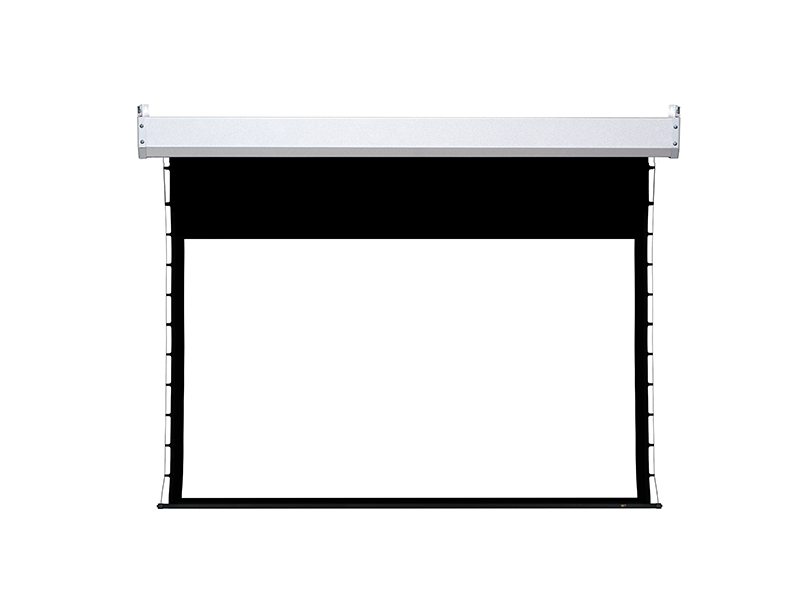
Based on practical teaching applications, the setup comprising a computer, projector, and electric screen has been widely used in multimedia classrooms for many years. While this configuration offers the advantage of relatively low initial investment, it comes with the significant drawback of high ongoing maintenance costs, particularly due to the expensive replacement of projector bulbs. Currently, the average lifespan of a projector lamp is around 2,000 hours, which generally meets the teaching demands for the first year. However, from the second year onward, bulbs need to be replaced periodically. Each replacement incurs considerable costs, typically amounting to one bulb per year. By the third year, replacements become more frequent, often requiring two changes annually.
As the projector’s LCD panels age, the replaced bulbs fail to restore the original levels of brightness and clarity. Compounding the issue, the cost of replacing LCD panels can reach up to two-thirds of the price of a new projector. Many existing projectors, installed several years ago, are now severely degraded. Not only do they require substantial annual maintenance expenditures, but their diminished performance in both brightness and resolution can no longer adequately support classroom instruction. This situation underscores the urgent need for upgrading the hardware equipment.

Below is a detailed list of teaching equipment configurations:
Multimedia Podium: Custom-built using cold-rolled steel with a spray plastic coating, 1.5mm thick. Dimensions: 1200 × 800 × 780 mm. Designed to accommodate a teaching computer and LCD monitor, with an additional connection box installed on the desktop.
Teaching Computer: Equipped with a Dual-Core E6700 processor, 4GB RAM, 500GB hard drive, DVD drive, Windows 7 operating system, and a 20-inch LCD monitor.
Smart Central Control System: Enables control over projector power, audio-video signal switching, and supports multiple interface types including RS232, I/O, IR, VGA, AV, USB, and RJ45.
Projector: Educational short-throw projector with 3500 lumens (ISO21118 standard), 1024×768 resolution, power-off protection, automatic vertical keystone correction, and mounted with a stainless steel hanging bracket.
Visual Presenter: 900,000 pixels, 600 lines resolution. Input interfaces: 2× AV, 2× VGA, 2× AUDIO, 1× MIC. Output interfaces: 2× AV, 2× VGA, 2× AUDIO, 1× MIC. Features external dual fill lights for even illumination, lens rotation adjustment over 30 degrees, compact and foldable design for flexibility, and an aesthetically pleasing appearance. Utilizes patented LED fill lights that extend lifespan, offers split-screen comparison function, constant color temperature for eye protection, positive/negative film conversion, image freeze function, and a video signal-to-noise ratio ≥50 dB. Also includes auto white balance, mirror imaging, built-in VGA distributor, and power-off bypass function.
Electric Projection Screen: 100-inch electric screen made of white fiberglass material. Includes an ultra-quiet ultrasonic motor for smooth and silent operation, self-protection mechanism, sleek design, and remote control operation.

High-Fidelity Speakers: Sensitivity: 97±2 dB, frequency response: 80–15000 Hz, impedance: 4–16Ω, power output: 30–50W. Ensures sufficient loudness across the audience area with excellent sound dispersion. Provides uniform coverage without dead zones, high clarity, and fidelity, free from noticeable acoustic defects such as echo, flutter echo, sound focusing, or resonance.
VGA Distributor: Compatible with both monochrome and color video signals, supports high video resolution for clear images. Boosts video signal through gain amplification, offers line compensation for distributed output, and complies with national electromagnetic radiation standards. Suitable for looped VGA video output, allows cascading of multiple devices, and supports VGA signals from IBM, Apple, laptops, and visual presenters.
VGA Switcher: Incorporates automatic gain technology and features power-off memory retention. Supports independent switching outputs and separate audio/video control. Includes built-in auto-looping function with customizable looping time and channels. Can be controlled via front panel, remote, or serial interface. Also offers panel and remote lock functions and allows restoration to factory settings.
This configuration, though cost-effective initially, entails increasing maintenance burdens over time—especially related to the projector components—ultimately necessitating modernization to maintain teaching effectiveness.


